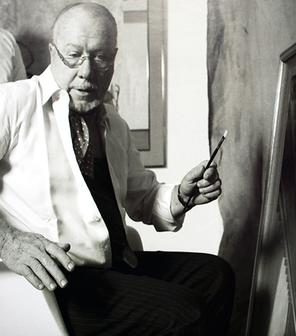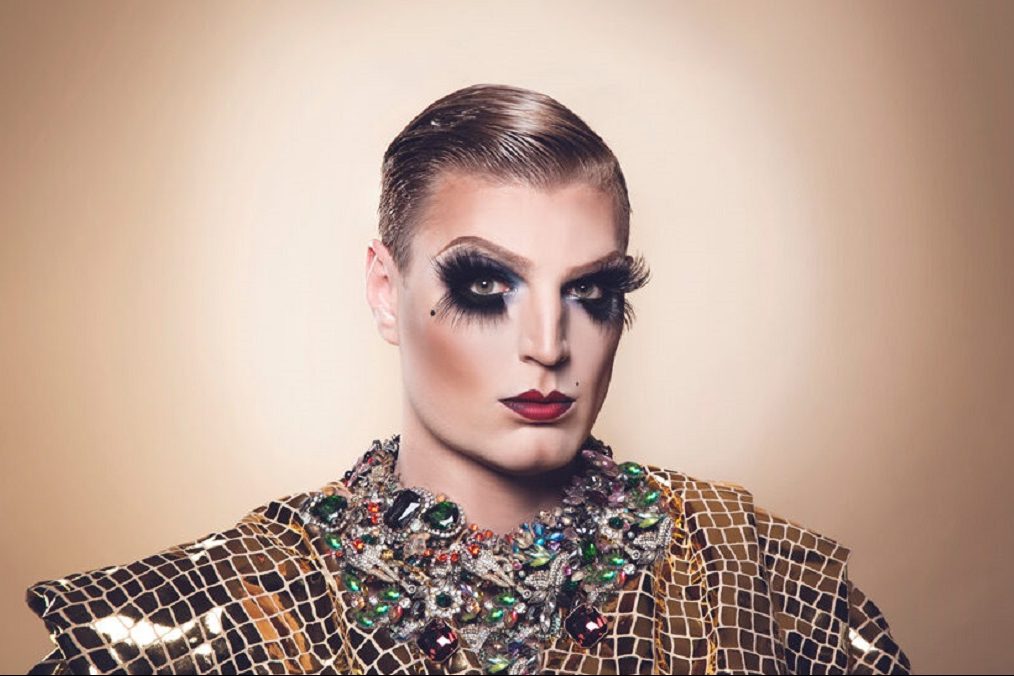JEFFREY Smart is an artist that even art-haters love.

Legendary for his almost surreal urban-scapes and paintings of commonplace objects such as road markings and billboards, re-made to become objects of sheer beauty, his work is of such fame that the National Gallery of Australia’s exhibition marking 100 years since his birth in 1921 is simply titled “Jeffrey Smart”.
I caught up with the co-creator of the show, the gallery’s Rebecca Edwards, while she was installing the huge exhibition of 130 works.
“Initially, the idea was to have 100 works for 100 years, but it ended up as 130 from public, university and private collections around the country and more than 50 lenders,” Edwards says.
Describing it as “a real group effort,” she said it took a lot of persuading to get some collectors to let their works go even for a short period for what will be a Canberra-specific exhibition.
But, happily, there are also works from the NGA’s own collection – in fact most of its collection is included – like the key work, “Wallaroo”; a rare 1950-51 self-portrait, “Procida”, made after staying on the island of Procida off the coast of Naples; and later works, such as the colourful “Corrugated Gioconda” (1976); and his enigmatic final work made in 2011, “Labyrinth”.
It won’t be a conventional retrospective, Edwards says, in the sense that she and co-creator Deborah Hart have allowed themselves a bit of freedom to pursue themes around Smart’s elusive art practice, especially appropriate given the artist’s ability to elude categorisation, exploring the spectrum of his work from the figurative and abstract to the purely geometrical, of which he once said: “My main concern always is the geometry, the structure of the painting.”
Maybe so, but as Hart points out, no matter what Smart said, and he said a lot about art, “his paintings are populated with portraits of friends, lovers and public figures, layered with references to literature, art and other artists, and underpinned by personal jokes and references.”
Edwards admits there is a chronology to the show, with early work including almost surreal urban images from around his native Adelaide up to later work from the 1960s onwards, where he trod a broader road.
“That for us was the fun thing about his work. Deborah and I both wrote major essays and pitted ourselves against each other in debate, to explore the multiple layers of Jeffrey’s art,” Edwards says.
One thing she most admires is the extraordinary discipline behind Smart’s paintings, which she described as “incredibly considered. He spent a lot of time over many, many studies and carefully crystallised his compositions.”
Once such is his 1951 painting “Wallaroo”, an ode to the seaside town on the Yorke Peninsula. Luckily, they’ve been able to exhibit some of his preparatory drawings for that.
“It’s nice to bring them together with the painting, it gives people a sense of how he picked and chose.”
There’s much for people to recognise in the exhibition.
“The empty streets are part of our everyday life, but what he did was to distill and compose them and bring beauty to scenes of everyday life that we might overlook, taking mundane objects and transforming them – like the curve of a freeway,” she says.
While she’s wandering around the exhibition talking to me, Edwards spots a pertinent wall text in which Smart is quoted as saying he tries “to paint the real world I live in as beautifully as I can”.
Those efforts were not confined to Australia, she notes, and in Europe, where he was to live and die, he started looking at new objects such as apartment blocks and autobahns.
That brings us to Smart’s ambiguity over his nationality, for although he lived in Italy from 1964 until his death in 2013, he was one of our most famous artists and strongly identified as an Australian, maintaining a very close cause connection to his homeland via an enthusiastic band of followers, so that he is even now more famous in Australia than elsewhere.
The exhibition is largely of works by Smart himself, but there are exceptions paying homage to his influences, notably a painting by one of his oldest friends, Adelaide painter Jacqueline Hick, and another by his mentor, Dorrit Black, who had established the Modern Art Centre in Sydney in the ’30s and who taught him compositional design.
“Jeffrey Smart”, National Gallery of Australia, December 11-May 15.
Who can be trusted?
In a world of spin and confusion, there’s never been a more important time to support independent journalism in Canberra.
If you trust our work online and want to enforce the power of independent voices, I invite you to make a small contribution.
Every dollar of support is invested back into our journalism to help keep citynews.com.au strong and free.
Thank you,
Ian Meikle, editor










Leave a Reply